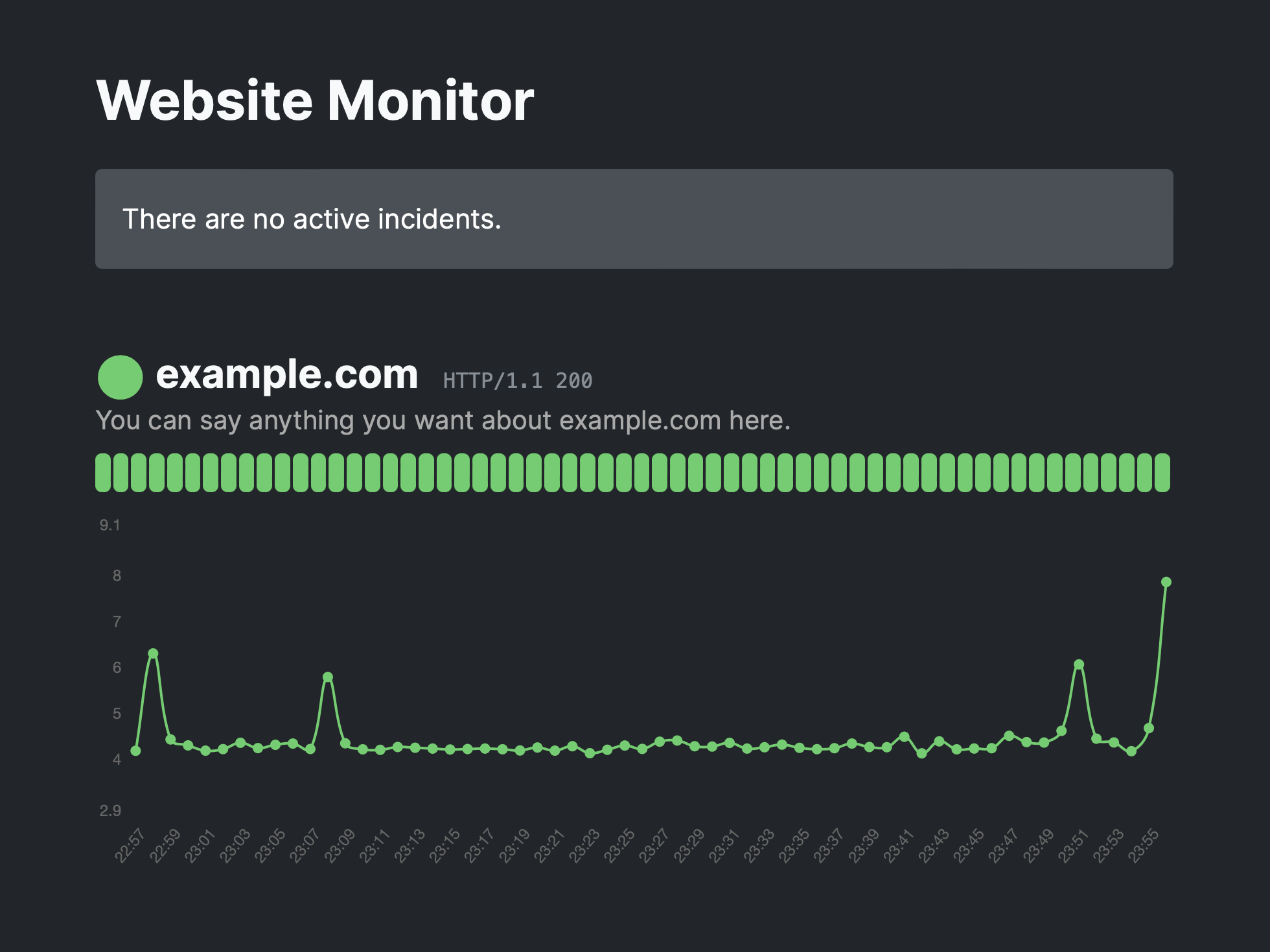Source Code Dispenser
Website Monitor
This is a simple self-hosted website monitor.

Usage
Upload everything to your web server (except the screen.png file, which isn’t needed). Make sure that PHP has permission to write to the monitors directory (this is where monitor data is stored).
Open monitors.json and add whatever websites you’d like you monitor. The format is a key-value pair, with the key being the “display name” of the website, and the value being the URL that will be checked. For example:
{
"example.com": "https:\/\/example.com",
"wikipedia.org": "https:\/\/www.wikipedia.org"
}
To automate your monitoring, you can add something like this to your crontab:
* * * * * /usr/bin/php -f /path/to/monitor.php >/dev/null 2>&1
You can display a specific message for each monitored resource by creating a Markdown file in the updates directory that uses the same display name for the resource (and has a .md extension). For example, if you want to display some text near the example.com resource, you’d add a file called example.com.md within the updates directory.
You can display various incident messages by placing a Markdown file in the incidents directory. By default, any file there will be treated as an informational message (shown in gray). If you prepend alert_ in the file name, the message will be treated as an alert (shown in red). And if you prepend notice_, it’ll be treated as a notice (shown in yellow).
This project uses Parsedown, a truly excellent Markdown rendering tool.
Source
| File | Modified |
|---|---|
| LICENSE | 2025-02-16 17:51:44 UTC |
| Parsedown.php | 2025-02-16 17:51:46 UTC |
| README.md | 2025-02-16 17:57:51 UTC |
| configuration.php | 2025-02-16 17:51:44 UTC |
| incidents | 2025-02-16 17:51:45 UTC |
| index.php | 2025-02-16 17:59:07 UTC |
| monitor.php | 2025-02-16 17:51:46 UTC |
| monitors | 2025-02-16 17:51:45 UTC |
| monitors.json | 2025-02-16 17:51:46 UTC |
| screen.png | 2025-02-16 17:51:46 UTC |
| style.css | 2025-02-16 17:51:46 UTC |
| updates | 2025-02-16 17:51:45 UTC |